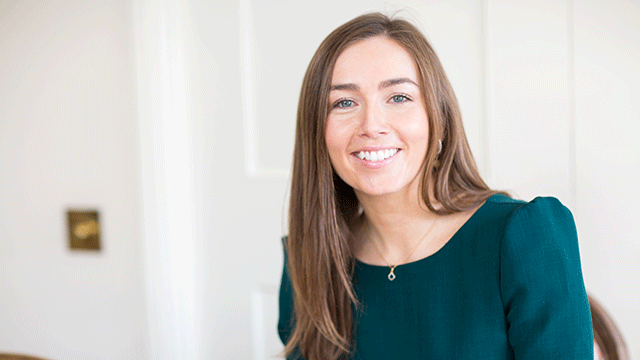The real estate industry’s relationship with people offers a real opportunity, and indeed a responsibility, to improve the real-world outcomes for people in the places we operate.
As an industry, we have made great strides over the past 10 years in reaching for improved environmental performance in the built environment. But integrating social impact into real estate has not progressed at the same pace.
The S in ESG is a number of years behind the E. That’s not to say there is not an authentic philanthropic spirit in real estate, not to mention heartfelt efforts to be a force for good in the communities in which we operate. Philanthropy has been part of our DNA, but charitable giving, as important as it is, is very different from incorporating social impact in everything we create and manage.
Evaluating industry commitment
I don’t say this as a criticism, because integrating social impact into business delivery is an involved task. It was the focus of a recent exercise conducted by The Good Economy involving interviews and a round-table discussion hosted by Grosvenor.
The objective of the exercise was to identify industry views on advancing social value and social impact, and build a snapshot of the different perspectives from within a sample of UK real estate businesses which could be illustrative of the market.
From the companies and funds we spoke to, we identified a genuine commitment to understand the incidental social value they create for people as part of business-as-usual. This is positive, but it is some way from going over and above to intentionally integrate real-world outcomes for people within business delivery, which is what social impact is about.
Social value vs social impact
- Social value: The incidental effects on people that occur as a result of a business’s usual real estate activity
- Social impact: The intended pursuit of certain measured outcomes that occur as a result of a deliberate impact strategy
Climbing the social impact maturity mountain
For the sake of illustration, I see the industry as being on a four-stage journey from philanthropy to social value and ultimately to social impact, with comparatively fewer participants operating at each stage (see the diagram below).
At entry level is philanthropy and compliance, and everyone is (or should be) here. But philanthropy is part of corporate responsibility and should not be mistaken for positive social value creation on its own. Equally, compliance is limiting as it is the minimum required to achieve a financial outcome.
At the next stage, many create social value as incidental to business delivery, such as jobs required through the construction process, with some systematisation (such as monetisation). While a deliberate assessment of social value is a positive, monetisation was described to me by one company as a cul-de-sac. It tries to explain a non-financial experience in financial terms, and as a result the improvements in people’s quality of life remain largely unknown.
Those in stage three are delivering social value focused on inputs but have an ambition to focus on outcomes and deliberately drive additional social outcomes in the places in which they are invested.
Social impact delivery is the ultimate point of the journey for steadily growing numbers of real estate investors and managers. These firms are making social impact a business imperative throughout the asset lifecycle. Local wellbeing, affordable workspace, community-led retail and hospitality and crime reduction, for instance, become genuine considerations in decision-making.
Frequently championed at board level, these businesses are increasingly committing dedicated resource to support impact performance data in decisions and are measuring the improvements in life experiences for people that can ultimately effect genuine social change.
Challenges and solutions
Enabling the shift between these stages of development takes corporate will and successfully resolving a series of challenges. These challenges include lack of a universally recognised, standardised approach to delivery, traditional perspectives of “trade off” which fail to recognise the potential correlation between social outcomes and sustainable risk-adjusted returns, a lack of knowledge-sharing forums and a fear of social washing creating nervousness over what the narrative should be.
These challenges can be addressed with an investment strategy that operationalises and embeds social outcomes for people and places, such as deliberately selecting occupiers in relevant areas of need – centres for disease control in areas of the worst public health, for example.
Understanding local need through research and effective stakeholder engagement is vital to identify what is needed most in a place and what, as a business, we can materially improve. In this way, place-based priorities can be identified and delivery plans tailored accordingly.
Collaboration between the private, public and third sectors, such as the Future You and Step Now initiatives, has a role to play in achieving scale and connecting to local need which may otherwise be unreachable.
While people’s lived experiences cannot be standardised, the basis of a systematic process with targets, KPIs and post-implementation evaluation can and should be. By setting intentional objectives and systematically measuring the outcomes, we ground attributable impact in a robust methodology which provides a confident narrative for authentically responsible businesses. By sharing our experiences, we increase our learning and improve our performance and the lived experiences in the places in which we invest.
What now?
The drivers are out there for moving to an impactful approach to investment: increasing regulation, investor demand, shifting public opinion, pressing national need, growing awareness of deep-seated inequality and longer investment horizons being just a few.
We as an industry have work to do in building our reputation as a net contributor to society. Going above and beyond in creating positive outcomes for people and places provides the opportunity to demonstrate the positive effect we bring. But that involves facing and overcoming the challenges and embracing a place-based impact approach to doing business. We also need to work on the narrative so that we are explaining our impact with confidence in our achievements and transparency in our shortfalls in a way that is meaningful to investors, employees and communities alike.
We have supported philanthropic projects for decades. Now is the time for a gear change – from charity projects to integrated strategies that address the cultural tensions to win “hearts and minds” and enhance the industry’s contribution to truly sustainable development.
Vivienne King is head of real estate social impact at The Good Economy












